Just as captivating as capital city Lisbon, the city of Porto in northern Portugal is another rising star as a tourist destination, home to sights and culture galore. Visitors to Porto immediately understand its pull, so it’s no wonder that it’s now considered one of Europe’s best places to visit.
While you could have a great time just sampling the food and drinking port wine here, you’ll definitely want to see Porto’s sights. After all, the historic city center is a firm favorite of photographers and a UNESCO World Heritage Site for its immense cultural significance. With this Porto itinerary, you’ll find out what to do in Porto in two days to experience all the highlights and feel like you’ve earned that port wine at the end of the day.
Recommendation: See the city’s sights and save money with a Porto Card, valid for up to four days. This pass gives you free access to the city’s public transport system along with over 170 discounts and benefits, including free entry to 11 museums and a port wine cellar.
Best Time to Visit Porto
As Porto grows in popularity, the question of when to visit becomes harder to answer. Tourism in Porto has really taken off in the last decade, so it’s important to time your visit carefully.
Summer has traditionally been seen as the best time to travel to Portuguese destinations like the Algarve. But the warm weather brings troves of tourists with it, and Porto gets busier each summer, limiting accommodation availability and driving up prices.
Consider visiting Porto in the shoulder season instead – April, May, late September, or October. These months offer comfortable sightseeing weather and smaller crowds at the most sought-after attractions, so they’re the best time to visit Porto.
How to Get Around Porto
Although Porto is a hilly city, many of the attractions are in the historic center, so you can walk between most of the best places to visit in Porto. But this adds up to a lot of walking over a weekend in Porto, so you should take advantage of public transport. Depending on where you’re staying and where you go, it may be the only way around.
As with Lisbon, trams are a popular way to get around the city. Porto only has a few tram lines, which require special tickets, but they’re a fun novelty. More practical are the bus and metro systems, which connect the whole city. You can buy rechargeable tickets for individual trips, 24 hours, or 72 hours, with fares based on the travel zones.
Recommendation: Another great way to explore Porto is with a hop-on hop-off combo ticket. This provides 48-hour access to two hop-on hop-off bus tours, one Douro River cruise, and a tour of the Cálem Wine Cellars. You can buy your combo ticket here.
Where to Stay in Porto
As the city sprawls quite a bit, the best places to stay in Porto are the ones as close to the historic center as possible. However, public transport makes it fairly easy to get around, so the center doesn’t necessarily have to be within walking distance. The one major consideration is that Porto is a hilly city, and walking up a big hill at the end of the day isn’t fun.
While the riverfront may seem like the obvious choice of where to stay in Porto, you’ll pay dearly for the privilege. If you’re looking for more affordable locations, don’t discount quieter areas like Fontaínhas to the east or Santo Ildefonso to the north. Whether you walk or take the metro, these neighborhoods aren’t far from the city center. Vila Nova de Gaia, the city across the river, is also closer than it may seem.
If you want your room to have the best view in the city, Pestana Vintage Porto Hotel is the way to go. This five-star hotel is right on the riverfront boulevard of Ribeira inside a carefully refitted 16th-century building, so you can look right out onto the Douro below.
For a central location and nice amenities without the high price tag, consider Stay Hotel Porto Centro Trindade. Only a short walk from a metro station and restaurants, this hotel offers clean and modern rooms along with welcoming staff.
Porto can be a great city for budget travelers, thanks to places like Oporto City Hostel. With friendly staff and a colorful open layout, this hostel offers clean and comfortable dorms as well as private rooms.
You can also find some excellent places to stay on Airbnb. For recommendations, take a look at our list of the best Airbnbs in Porto.
For more accommodation options in Porto, check out Booking.com. This site consistently offers the best rates, and its customer service is on point.
The Perfect 2-Day Porto Itinerary
With so much to see and do, it makes sense to start with the very best places to visit in Porto. This itinerary will take you from the historic and cultural landmarks at the city’s core to the far side of the Douro and its port wineries. On both sides of the river, you’ll get some exceptional views and a feel for just how layered Portuguese culture is.
However, before we get to our Porto itinerary, we just wanted to remind you to purchase travel insurance. You never know what will happen and, trust us, you do not want to get stuck with thousands of dollars in medical bills. As a wise man once said, “If you can’t afford travel insurance, you can’t afford to travel.” So don’t leave home without it.
SafetyWing offers travel insurance for only about $10 a week, making it a no-brainer to get. You can get a quick, non-binding quote below:

SafetyWing is, of course, not the only option available. Two other popular alternatives are World Nomads and Heymondo.
Now that you can travel with peace of mind, let’s get into this Porto travel itinerary to maximize your 48 hours in Porto.
Porto Itinerary: Day 1
The best way to start your Porto visit is by walking straight to the heart of the city and down to the riverfront. After some time by the water, you’ll take in a few cultural landmarks and get a feel for the city. Along the way, you’ll stop at several viewpoints to marvel at the superb cityscape, which is definitely one of the best things to do in Porto.
Recommendation: Fall in love with Porto on a three-hour guided tour of all the historic city’s main monuments. You’ll discover secret corners and hidden gems amongst the maze of winding streets, cafes, and art galleries.
Avenida dos Aliados
The Avenida dos Aliados (Avenue of the Allies) is a great starting point. Close to several metro stops and the city center, this series of sloping squares is quintessential Porto. Covered in small Portuguese tiles and lined by trees and elegant smaller buildings, Porto City Hall takes pride of place at the top.
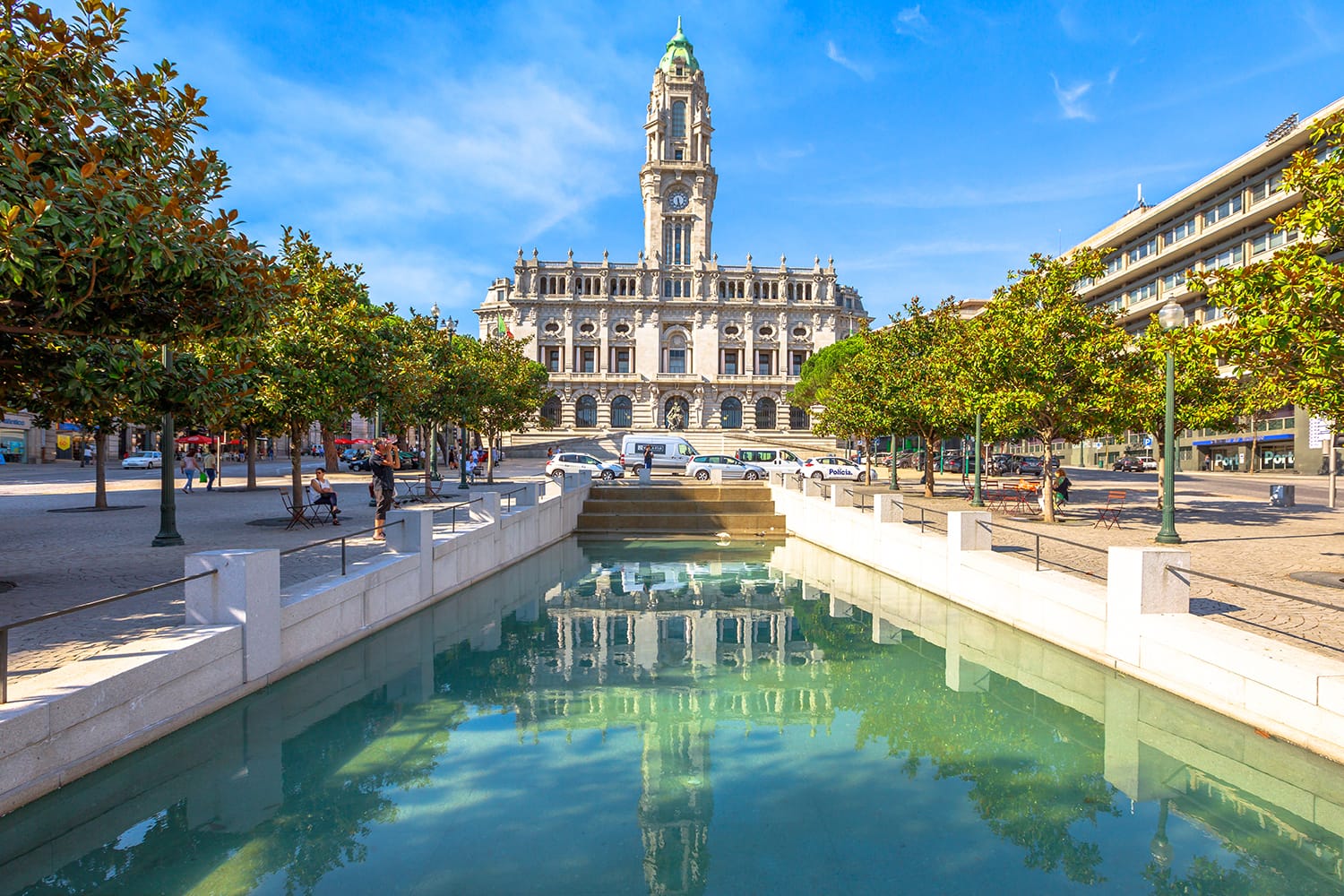
Vitória Viewpoint
With such a beautiful cityscape, let’s waste no time finding one of Porto’s iconic viewpoints. Rather than heading for one of the more obvious and popular ones, we’ll start with the Miradouro da Vitória (Viewpoint of Victory). Hidden in an empty lot behind a church, which itself is above a rather concealed staircase, it’s hardly somewhere you’re likely to find accidentally.
While the viewing area isn’t much to look at, that was never the point. What you should be looking at is the sterling view over the orange rooftops of Porto out to the Luís I Bridge, the Porto Cathedral, and the Douro. This should give you a great taste of what’s to come on your Porto trip.
Ribeira Waterfront Boulevard
Continuing downhill through the streets of Porto, you’ll soon find your way blocked by a huge river. This is the Douro, a vital (not to mention very pretty) part of the city’s history and economy.
Running along the Douro is the Cais da Ribeira (Riverside Pier), a boulevard of restaurants and quaint tiled townhouses. From the riverfront, you can look across to the city of Vila Nova de Gaia and the giant Luís I Bridge that links it to Porto. Don’t forget to look back at the buildings of Porto, with their beautiful tiles and balconies, that also sit along this side of the river.
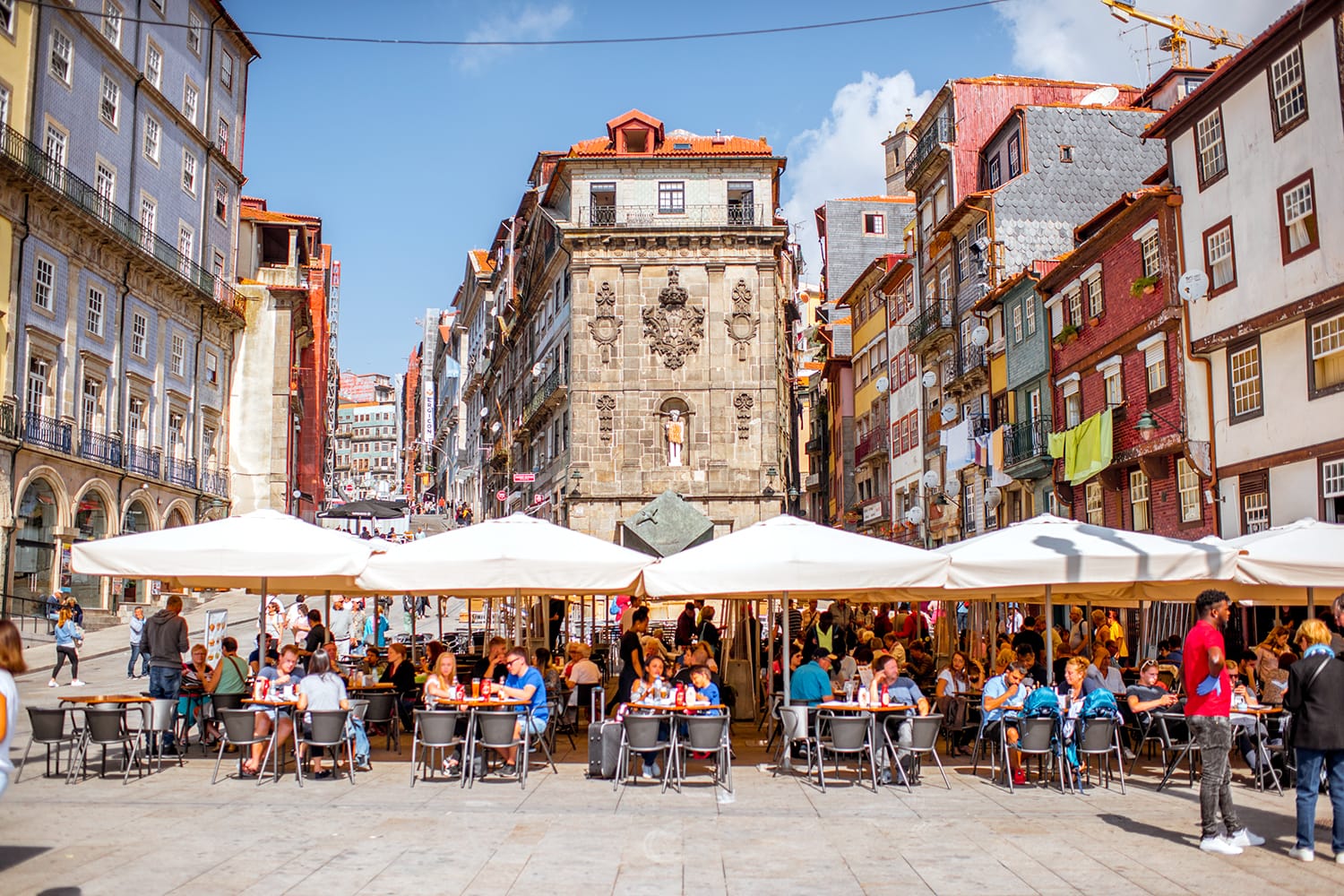
Douro River Cruise
While strolling the riverfront, you’re sure to see boats and people lining up to board them. These are for a cruise that runs up and down the Douro, showing the six bridges that span this mighty river, not to mention all the interesting waterfront. Lasting around 50 minutes, this gentle river cruise is best enjoyed before the day gets too hot.
We recommend you book your tickets in advance, as ticket lines can get quite long for the boat cruises. You can buy your skip-the-line tickets here.
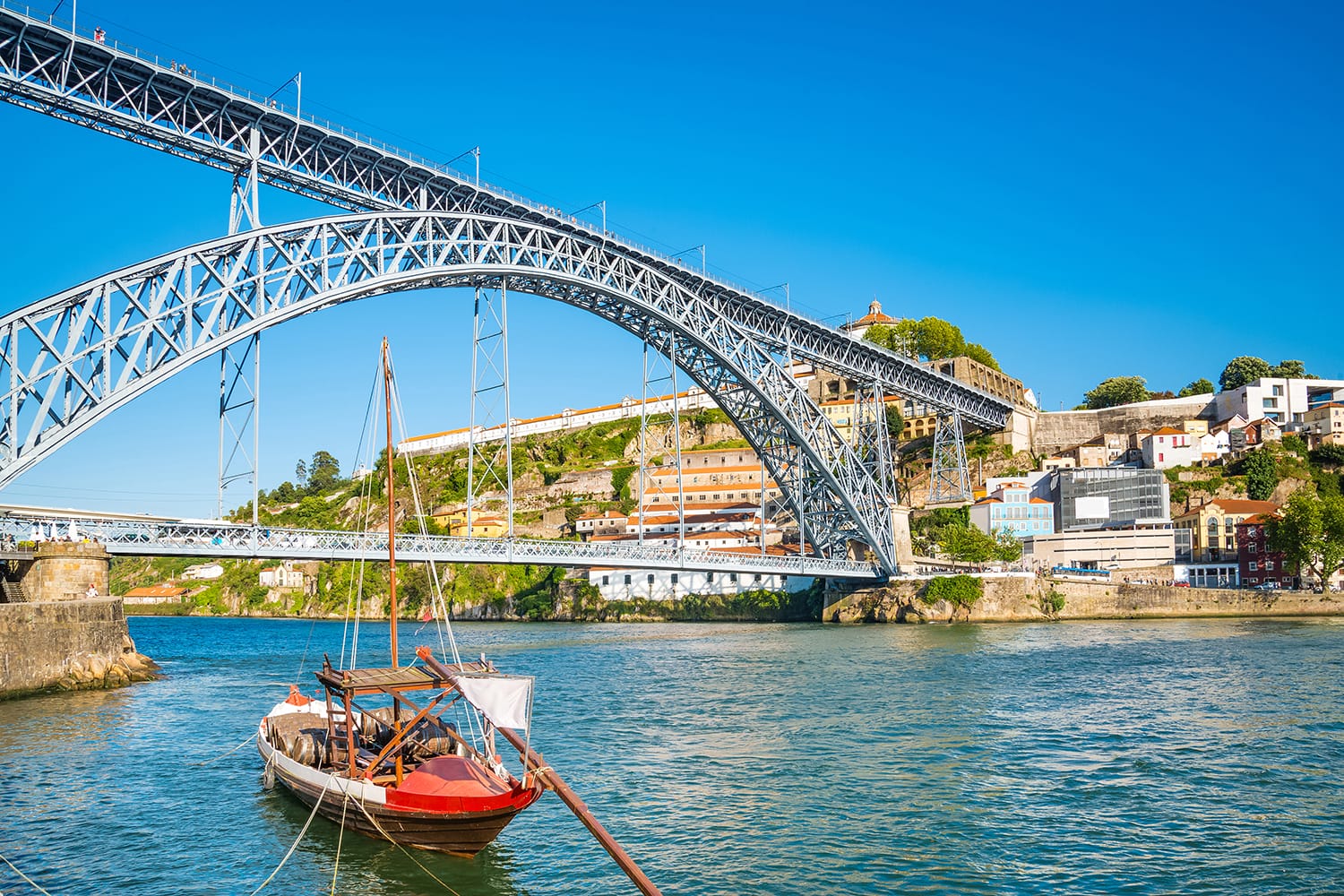
Gardens of Infante Dom Henrique
The city center isn’t one of Porto’s greenest places. It’s a world of stone streets, tiled houses, and bright orange roofs, making a park square like Jardim do Infante Dom Henrique a nice change of scenery. The park is surrounded by fascinating buildings, such as the Ferreira Borges Market above, and has a big statue of Prince Henry the Navigator (also known as Dom Henrique) at its center.
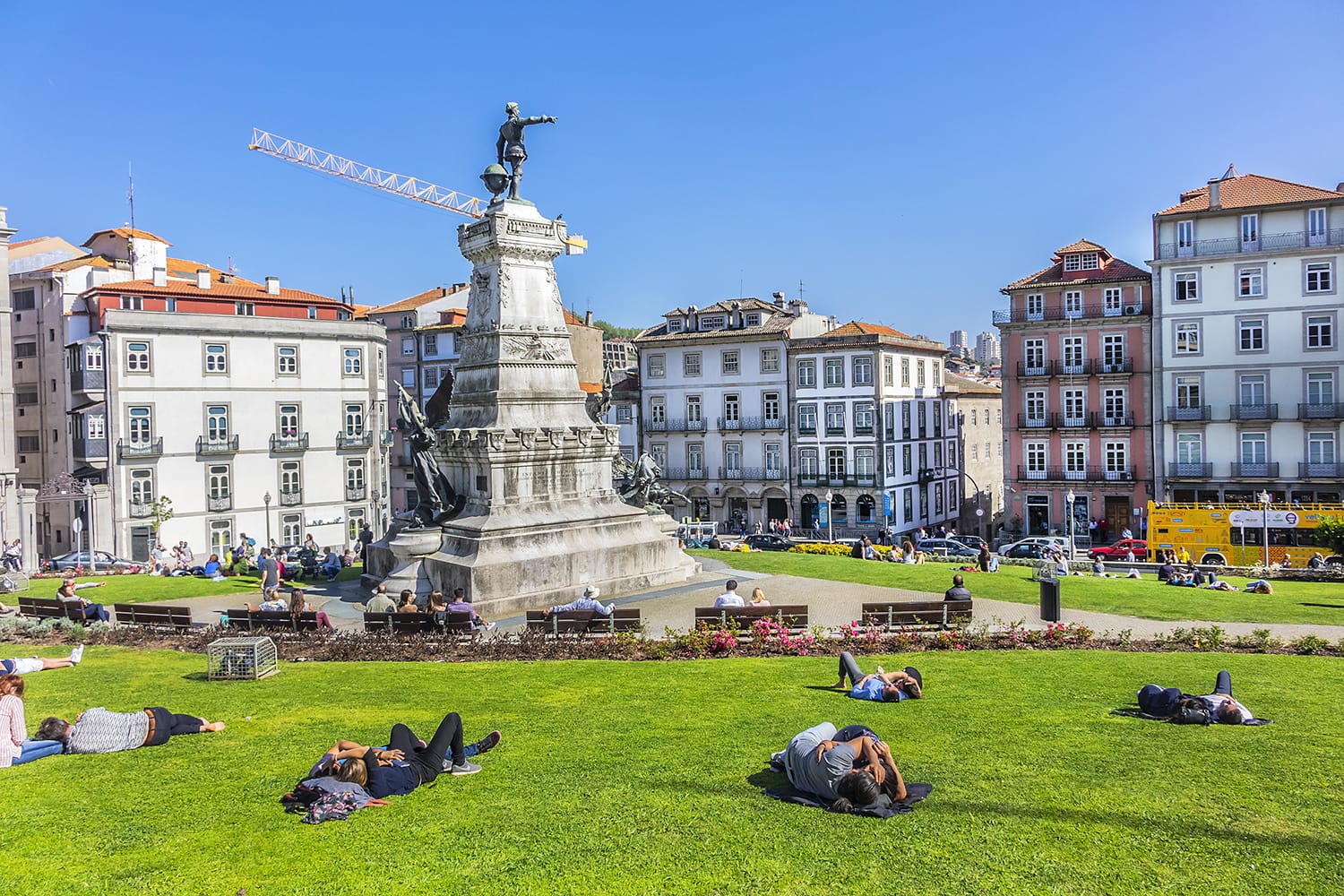
Monument Church of St. Francis
With many of Porto’s churches, it’s the outside you’ll want to see. This isn’t the case with the Church of St. Francis, as its plain exterior masks a treasure trove. Inside is exquisite centuries-old woodwork from the floor to the ceiling, much of it covered in gold. The gilt wood positively glows within the church’s low light and needs to be seen to be believed.
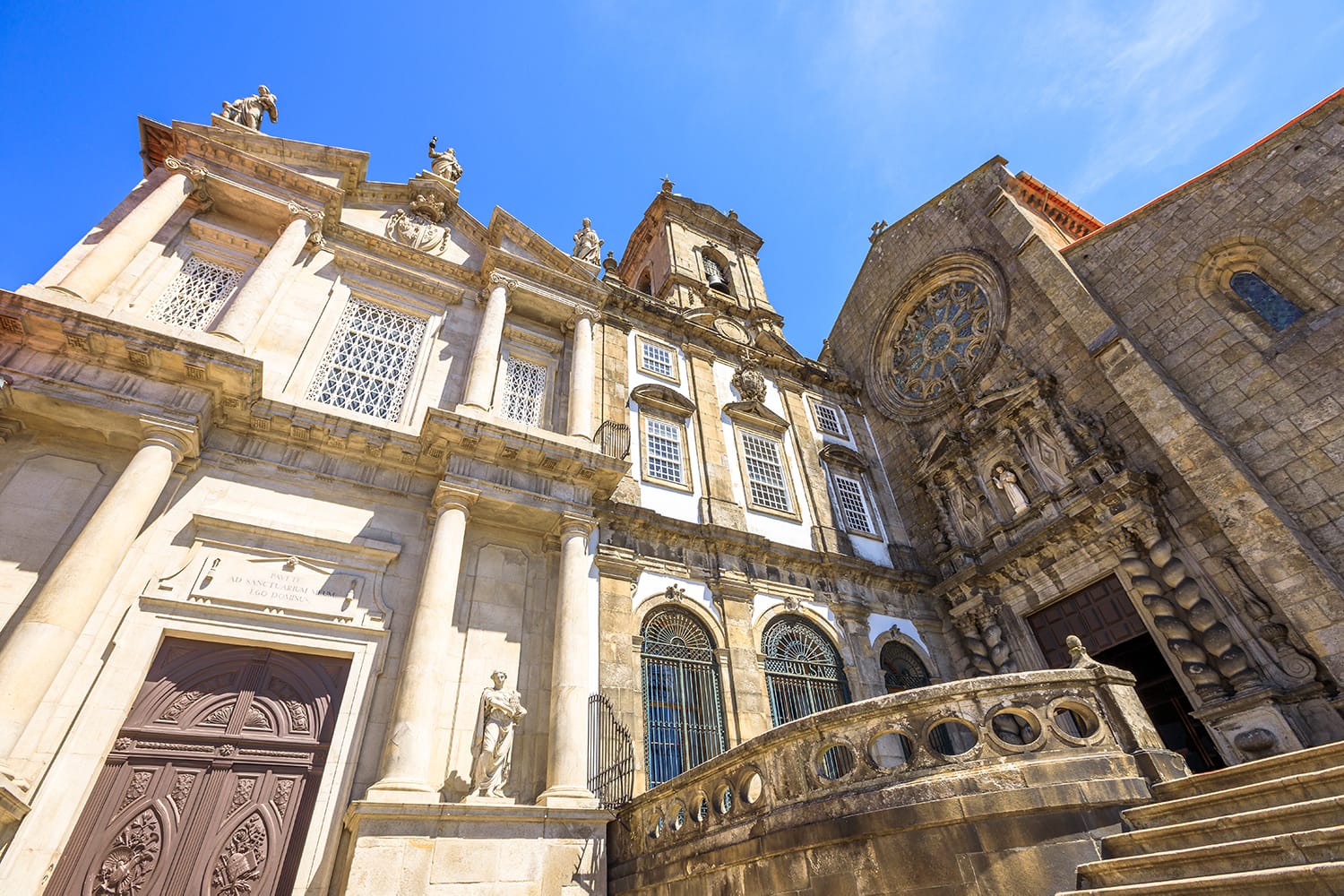
Livraria Lello
This bookstore has become a huge deal in Porto, often sporting one of the longest lines in the city. The store is famous for its beautiful interior that strongly resembles Hogwarts in Harry Potter. With its stained-glass ceiling, delicate woodwork, and majestic staircase, it’s easy to picture this incredible bookstore belonging to a magical world.
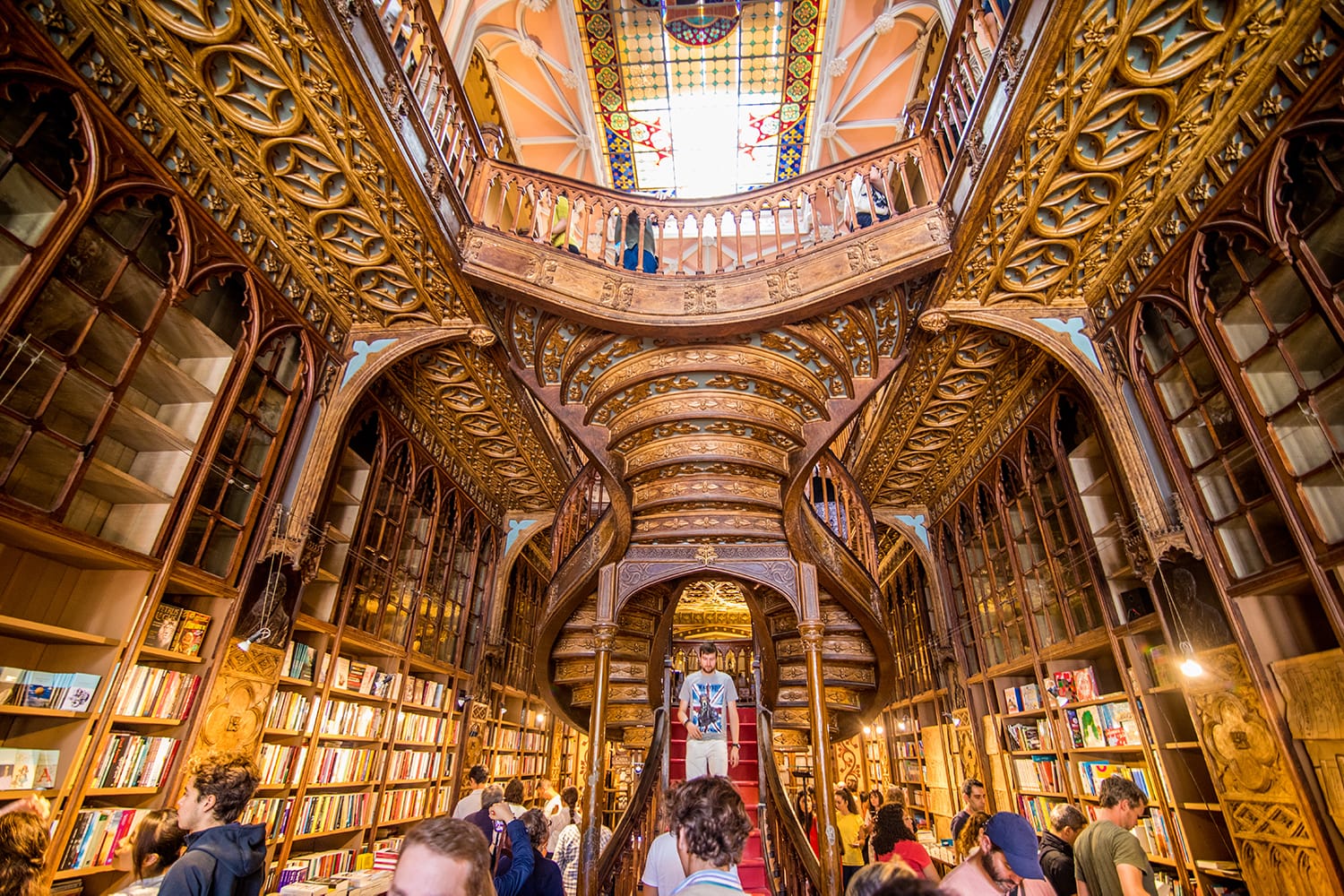
Gomes Teixeira Square
Worth a quick detour after the bookstore is the Praça de Gomes Teixeira just up the road. There’s plenty to take in with a brief look around, including the University of Porto, the Fountain of the Lions, and the view over to incredible blue tiles on the side of the Carmo Church.
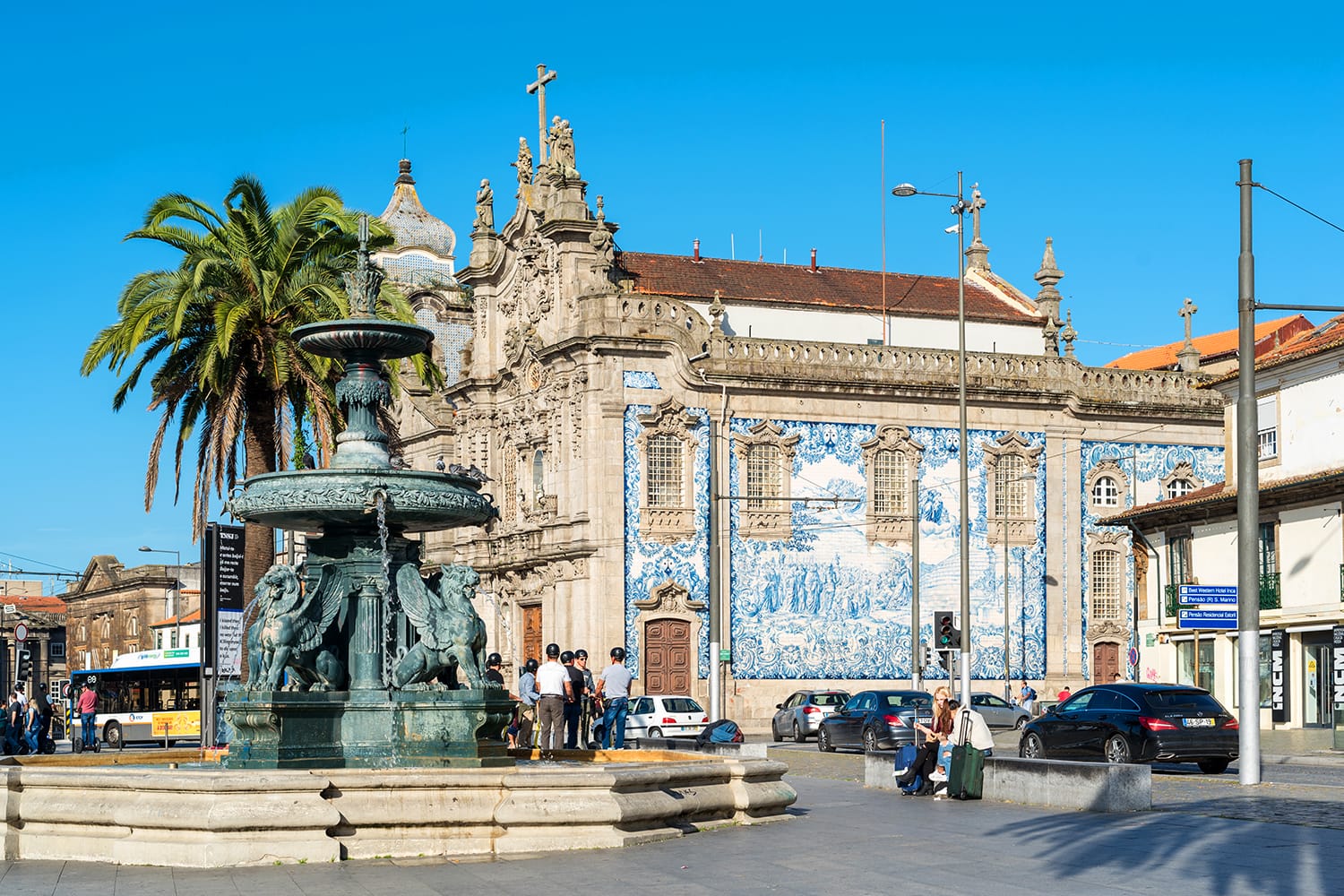
Clérigos Church and Tower
Of the many churches you’ll come across during your two days in Porto, one that you’ll constantly find yourself spotting is the Clérigos Church. Rather than being covered in dazzling tiles to catch the eye, the church is positioned at the top of a steep road. This setting and the attached Clérigos Tower, which rises from its western end well over the surrounding rooftops, add to its imposing nature.
Visiting the church and tower, you’ll snake your way up the levels almost without noticing. One minute you’re at ground level, and the next you’re looking into the main hall from a balcony. But the highlight is the view from the 75-meter-high bell tower, granting a new perspective on Porto’s cityscape.
Skip the long lines and buy your tickets to the Clérigos Tower in advance here.
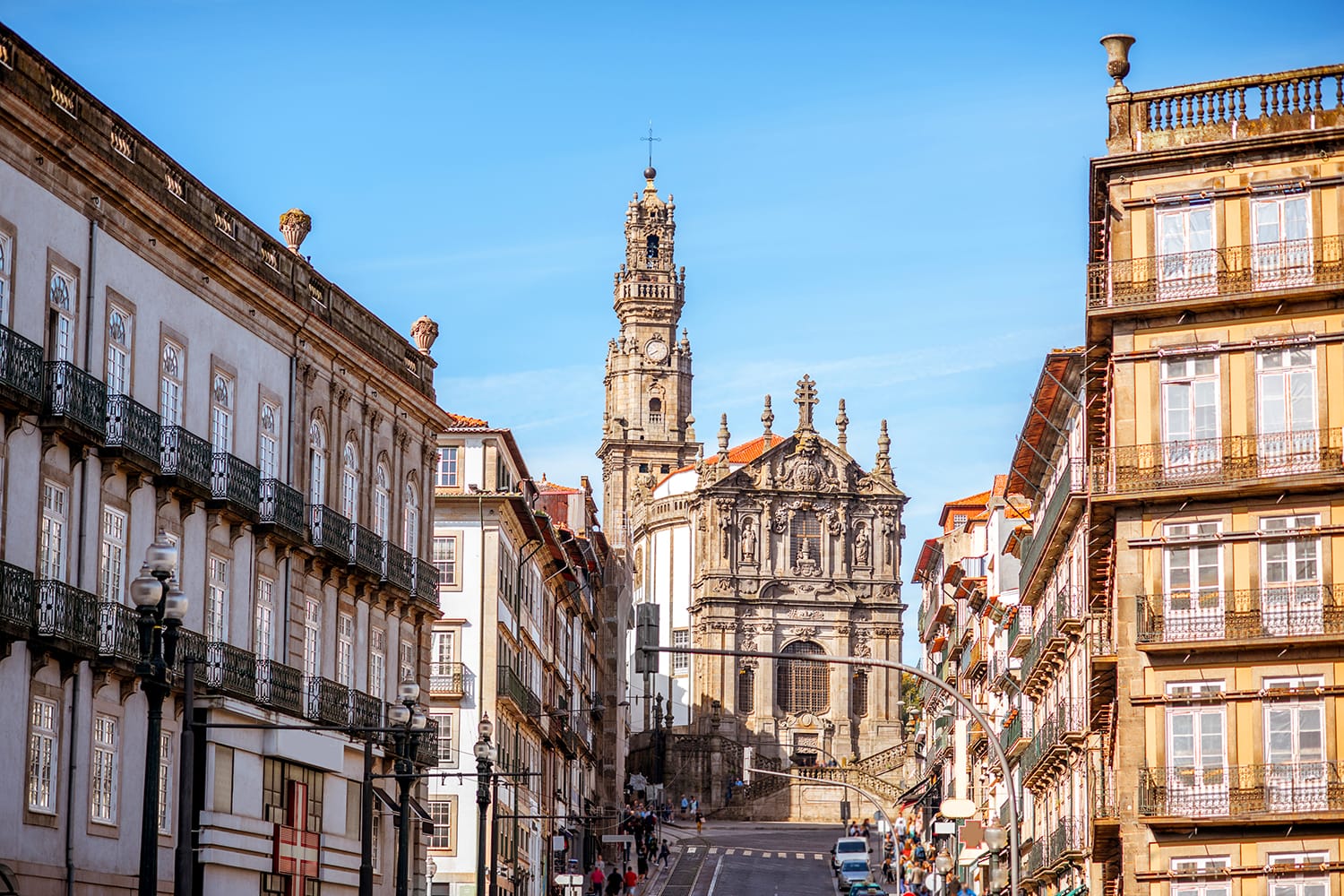
Beach Sunset in Foz do Douro
While Porto isn’t as well known for its nearby beaches as Lisbon is, the beaches in its coastal neighborhood are almost as easy to reach. If you take the Line 1 tram from the city center to the end, you’ll be just a short walk from the beaches of Foz do Douro.
Unless you’re keen to spend some time sunbathing and swimming, head down to the beach just before sunset. That way, you can watch the sun sink down over the Atlantic Ocean and see the sand glow with the fading light.
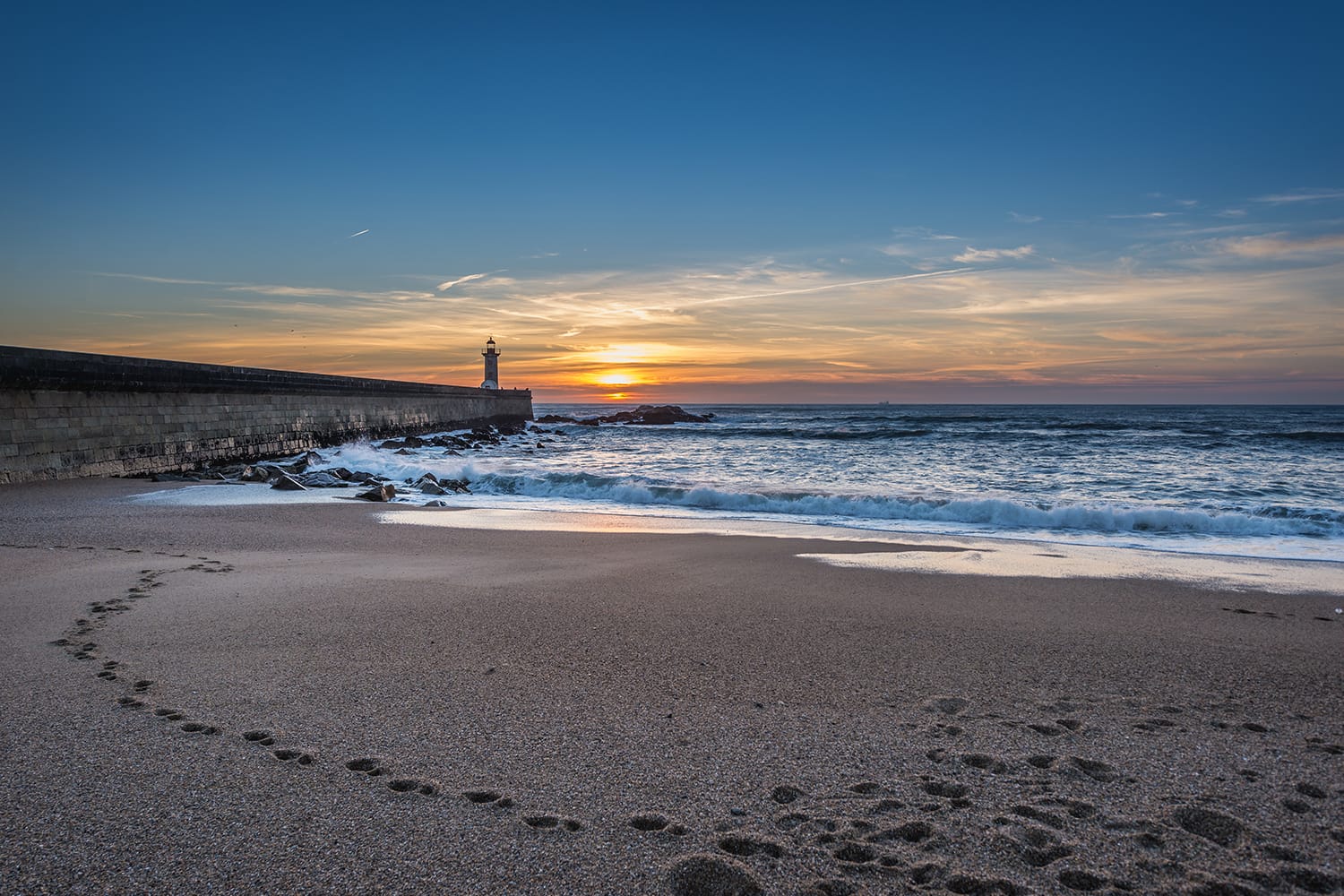
Porto Itinerary: Day 2
There’s still more of Porto for you to uncover during your second day, before you cross the river over to Vila Nova de Gaia to drink port wine and enjoy another sunset.
Chapel of Souls
Your first stop will start a sort of theme for the day. This small church along one of Porto’s more lively shopping streets is covered in ornate azulejos, traditional blue and white Portuguese tiles that depict various scenes for giant and elaborate pieces of art. It’s sights like the Chapel of Souls that set Portugal apart from other major cities in Europe.
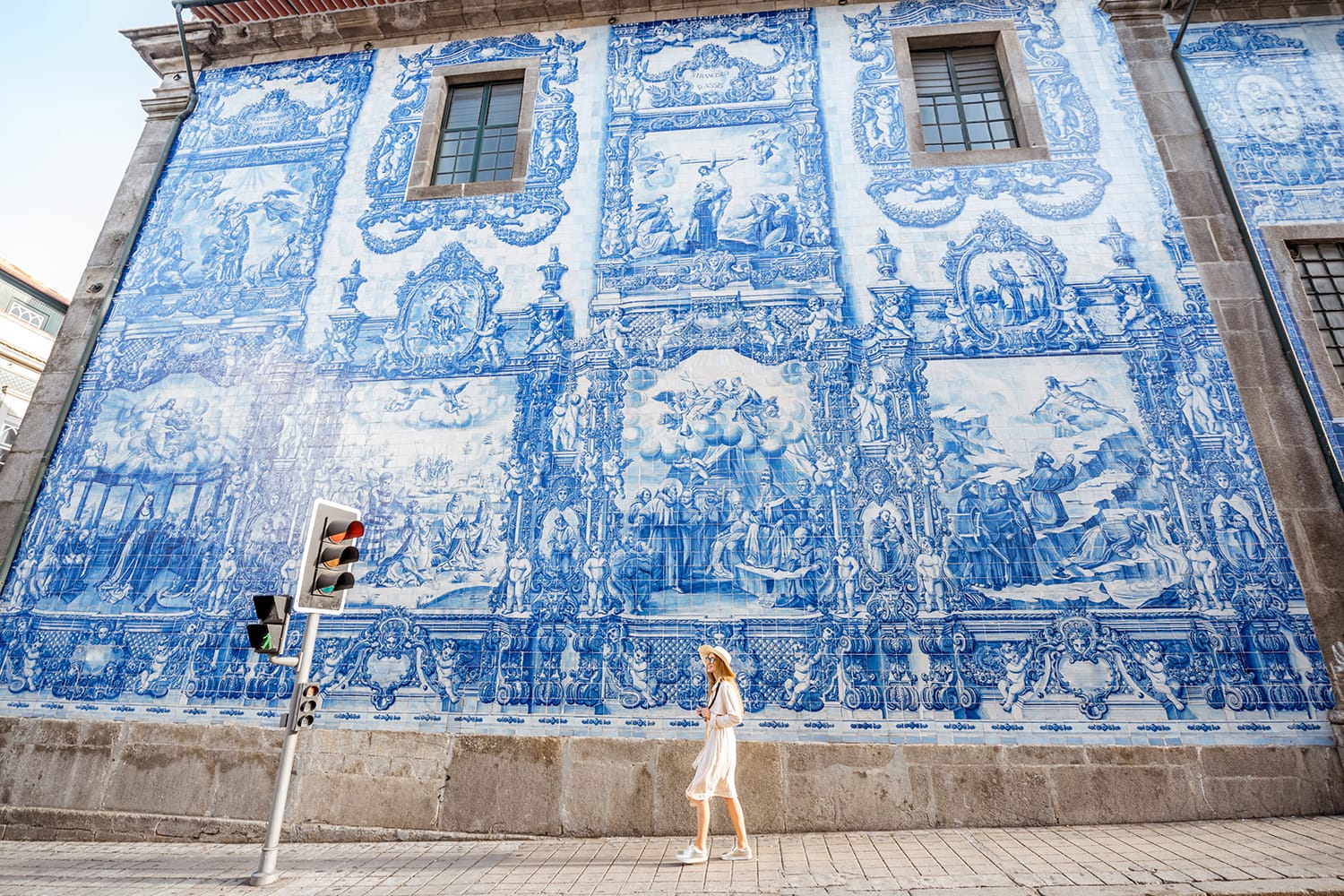
Bolhão Market
For a taste of local life in Porto, there’s no better choice than exploring Mercado do Bolhão. Its open-air, two-story Neoclassical building is quite a grand home for something so humble. Cafes run along the outside, while you’ll find grocers, butchers, and the inevitable souvenir stalls inside. This historic market shows how old-school Porto can be if you know where to look.
Church of St. Ildefonso
We’ve saved one of Porto’s most beautiful churches for last. Sitting on a hilltop nearly opposite the Clérigos Church, the Church of St. Ildefonso is another chapel decorated with azulejos. Instead of blanketing the church in blue and white, though, the tiles have been incorporated into its Baroque design, making for an interesting sight.
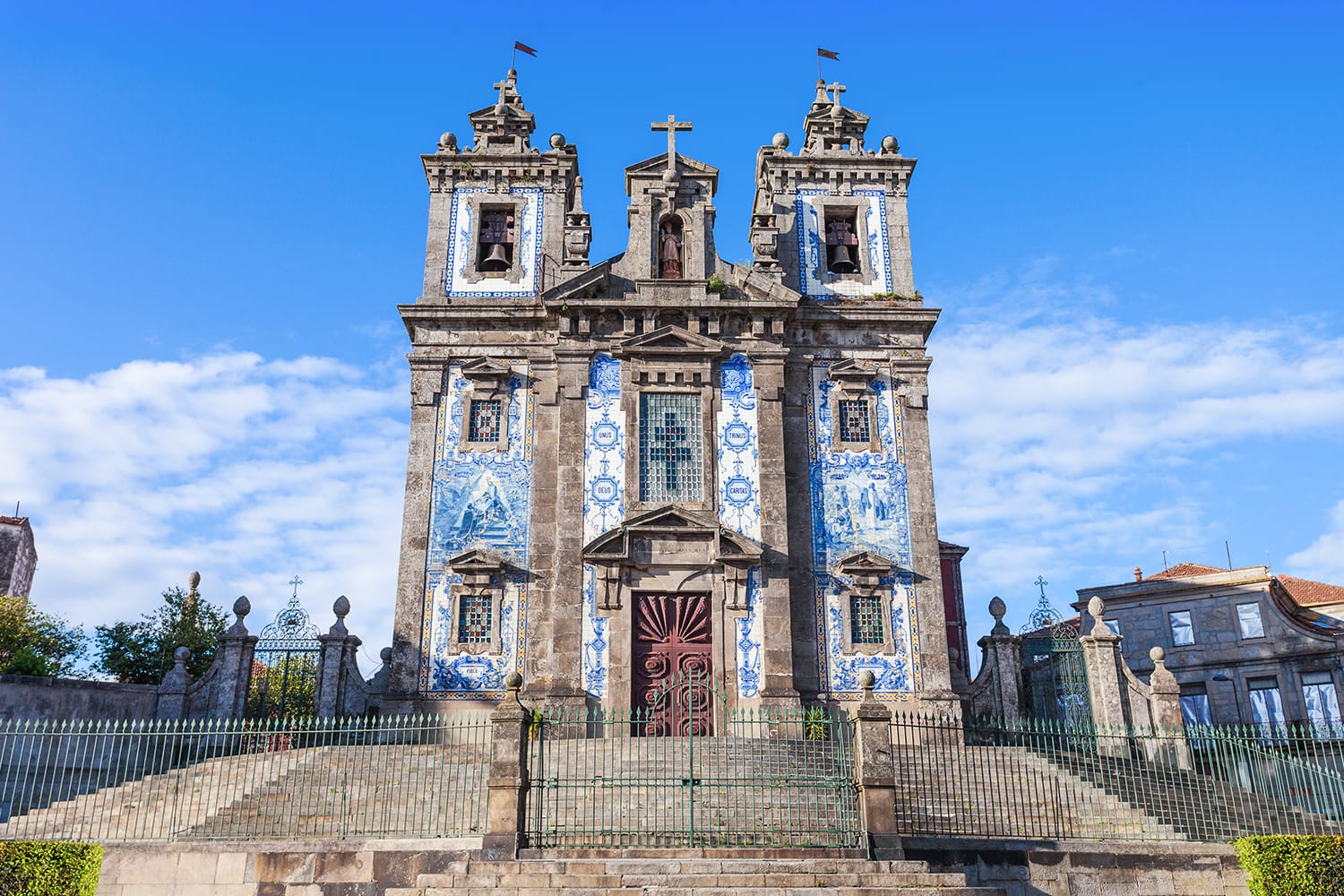
São Bento Railway Station
It might seem strange to visit a train station without actually needing to take a train, but there aren’t many stations like this one, as the walls of its main hall are completely covered in azulejos. While many Portuguese train stations have some tilework, São Bento is arguably the most famous for it.
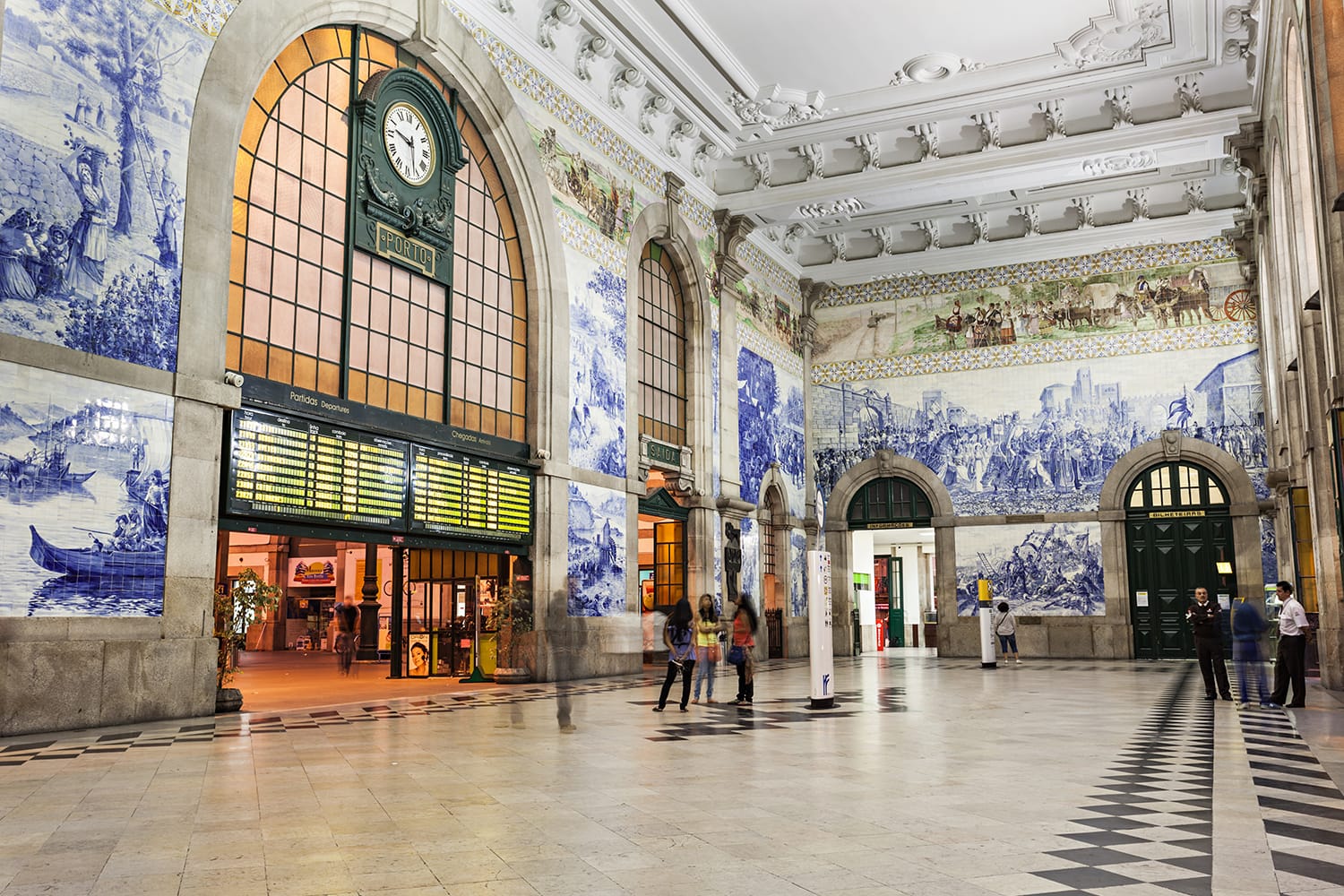
Porto Cathedral Views
After seeing so many of Porto’s churches, you’ll finally visit its cathedral. Interestingly, though, the Sé do Porto isn’t immediately noticeable as a cathedral. With its strategic position, surrounding towers and terraces, and long drops below, you could easily mistake it for a fortified castle.
Even with its nice stone facades and inner cloisters, most people come to the Porto Cathedral for the city view. The terraces will treat you again to the fascinating features of Porto’s cityscape.
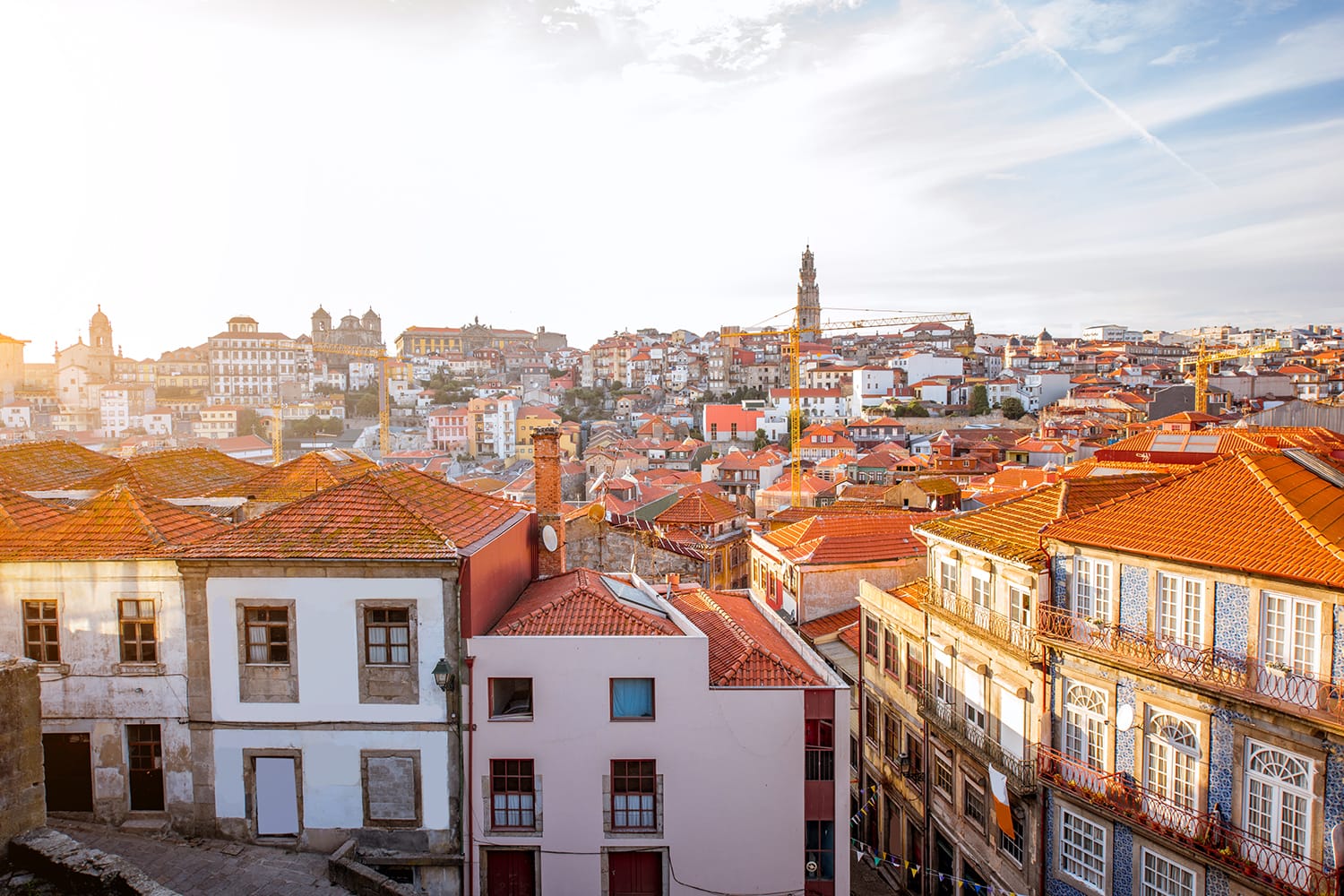
Fernandine Walls
Among Porto’s many landmarks, the Muralha Fernandina (also known as the Walls of Dom Fernando or the Fernandine Walls) tend to get overlooked. These historic walls once encircled Porto’s medieval town, the cathedral being the center of Porto at the time. As the city grew over the centuries, the walls got in the way and were removed. Only two stretches remain and have somewhat merged with the Old Town around them. Still, at 30 feet tall, these stone walls are worth the time to see.
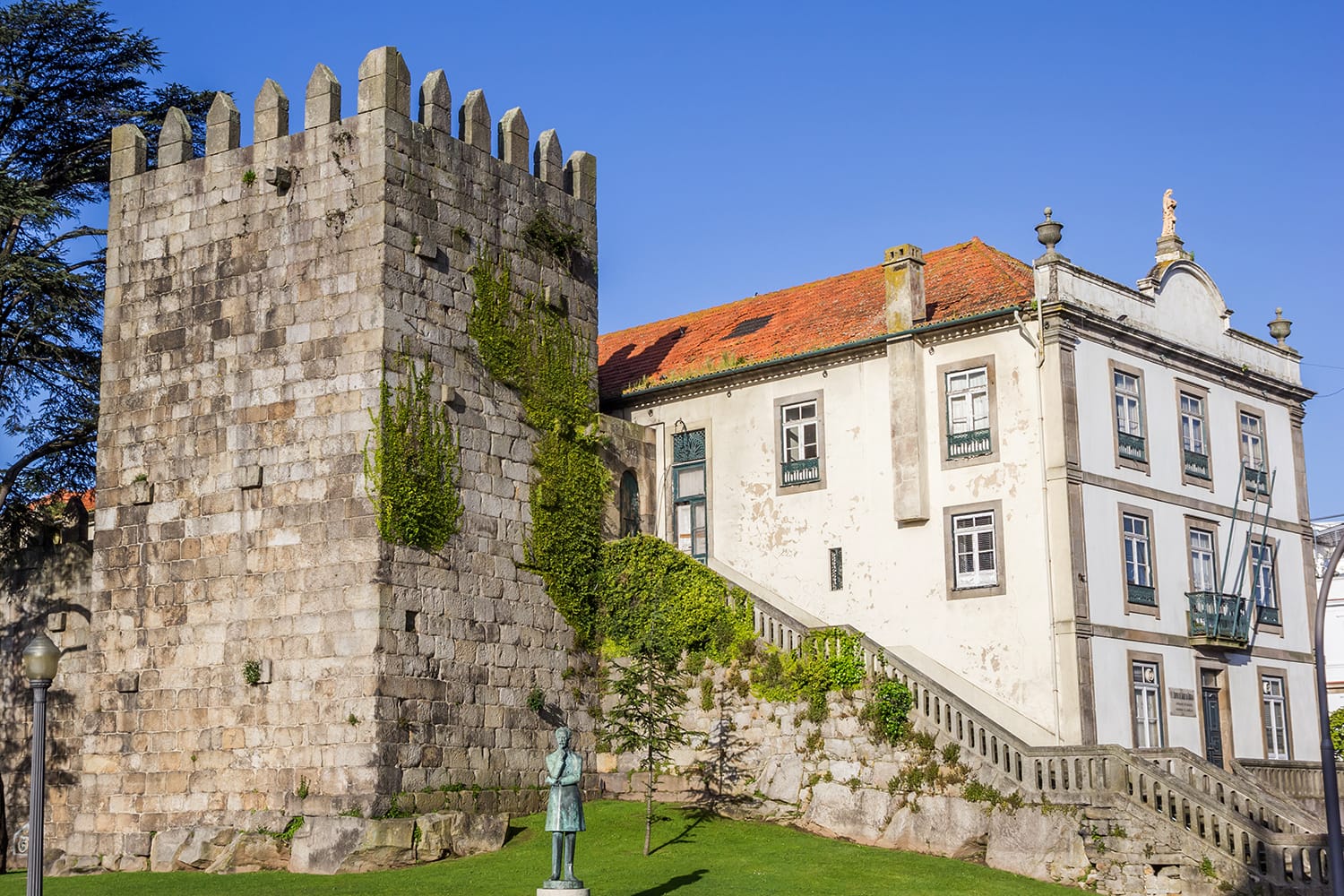
Luís I Bridge
It’s time for one of Porto’s best-known features, the huge Luís I Bridge. Looking at the design of this iconic metal bridge, you won’t be surprised that it was designed by a student of Gustave Eiffel, the man behind the Eiffel Tower in Paris.
While many of your city views so far have included the bridge, the views from the bridge itself are just as fantastic. Coming from the direction of the old city walls, you’ll be able to walk out onto the top of the bridge, where you can admire the view down along the Douro and of the buildings on either bank. Be careful up there, though – trains regularly pass through the center of the bridge, so look both ways before crossing.
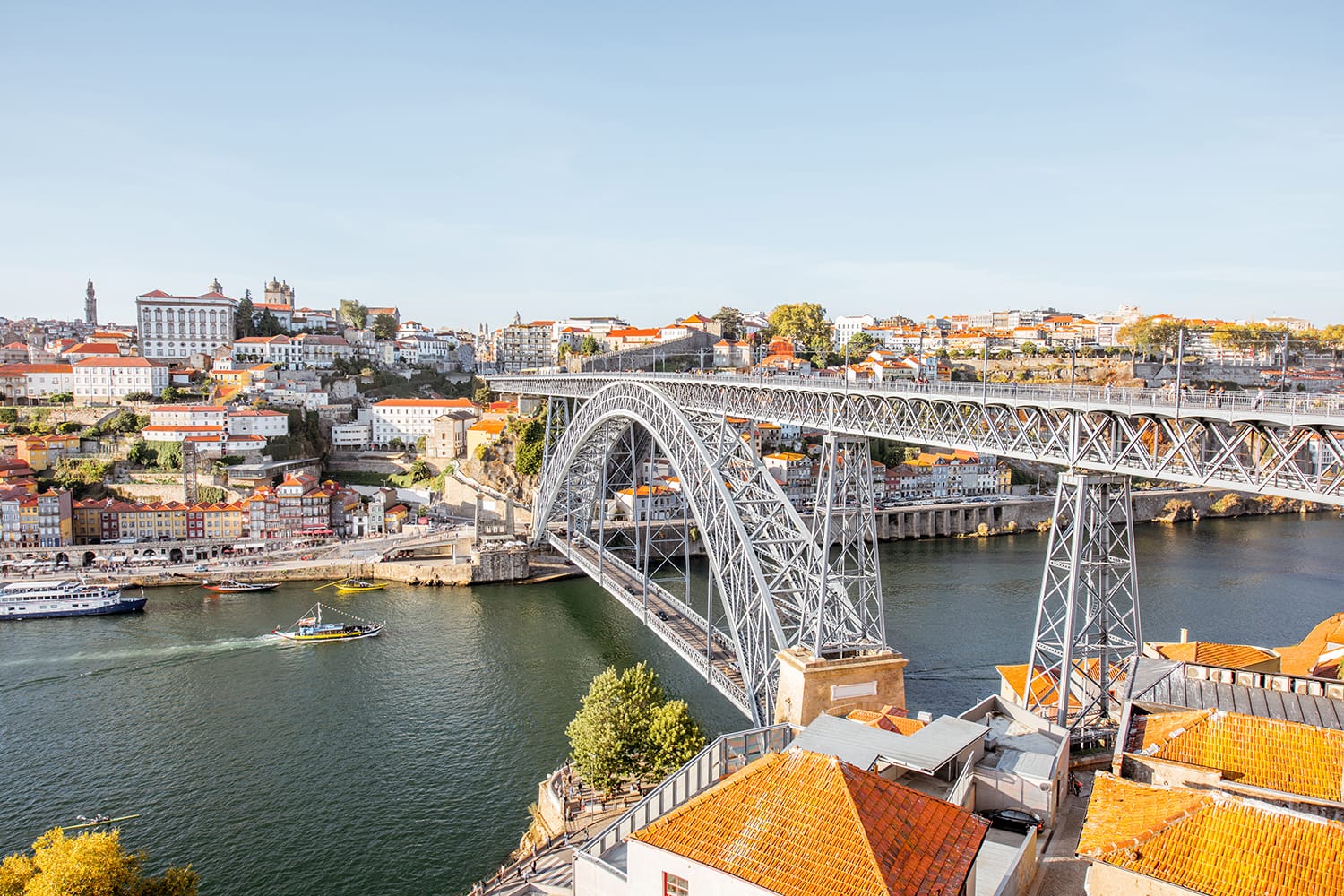
Gaia Cable Car
Sure, you could walk down to the riverfront of Vila Nova de Gaia from the Luís I Bridge, but it’s far easier and more fun to ride in the Teleférico de Gaia. Floating over the rooftops of buildings and wineries in this modern cable car, you can look down at the people wandering along the south side of the river. With a return ticket, you’ll also save yourself the pain of walking back up later.
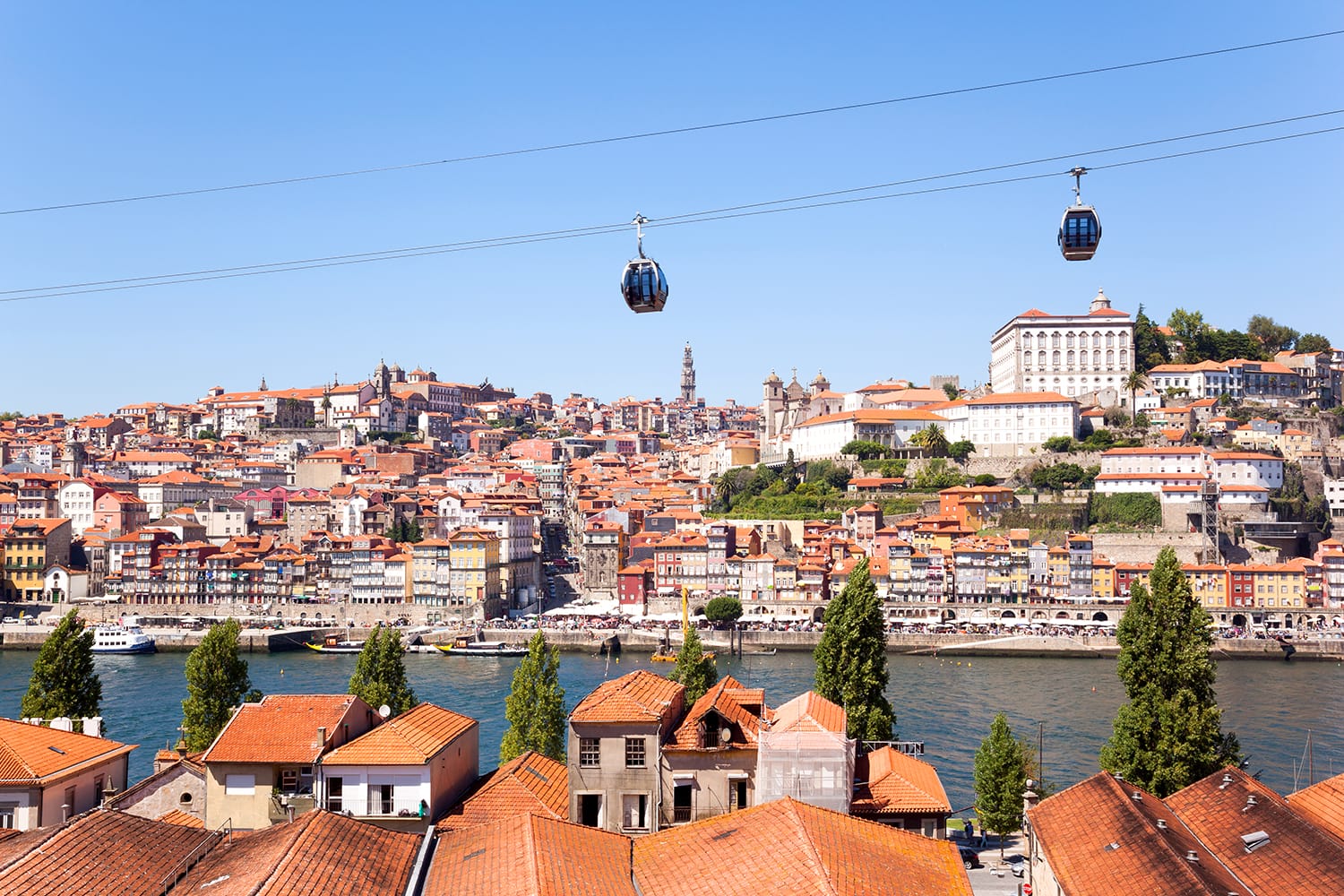
Gaia Riverfront
Since you’ve walked along one bank of the Douro, it’s only fair to give the riverfront of Vila Nova de Gaia a shot too. With its green gardens and wooden rabelos, the traditional boats that were used to transport cargo for centuries, it’s quite a pleasant place to walk. Throwing in the superb view back to the buildings of Porto, you could even argue that this is the better riverfront.
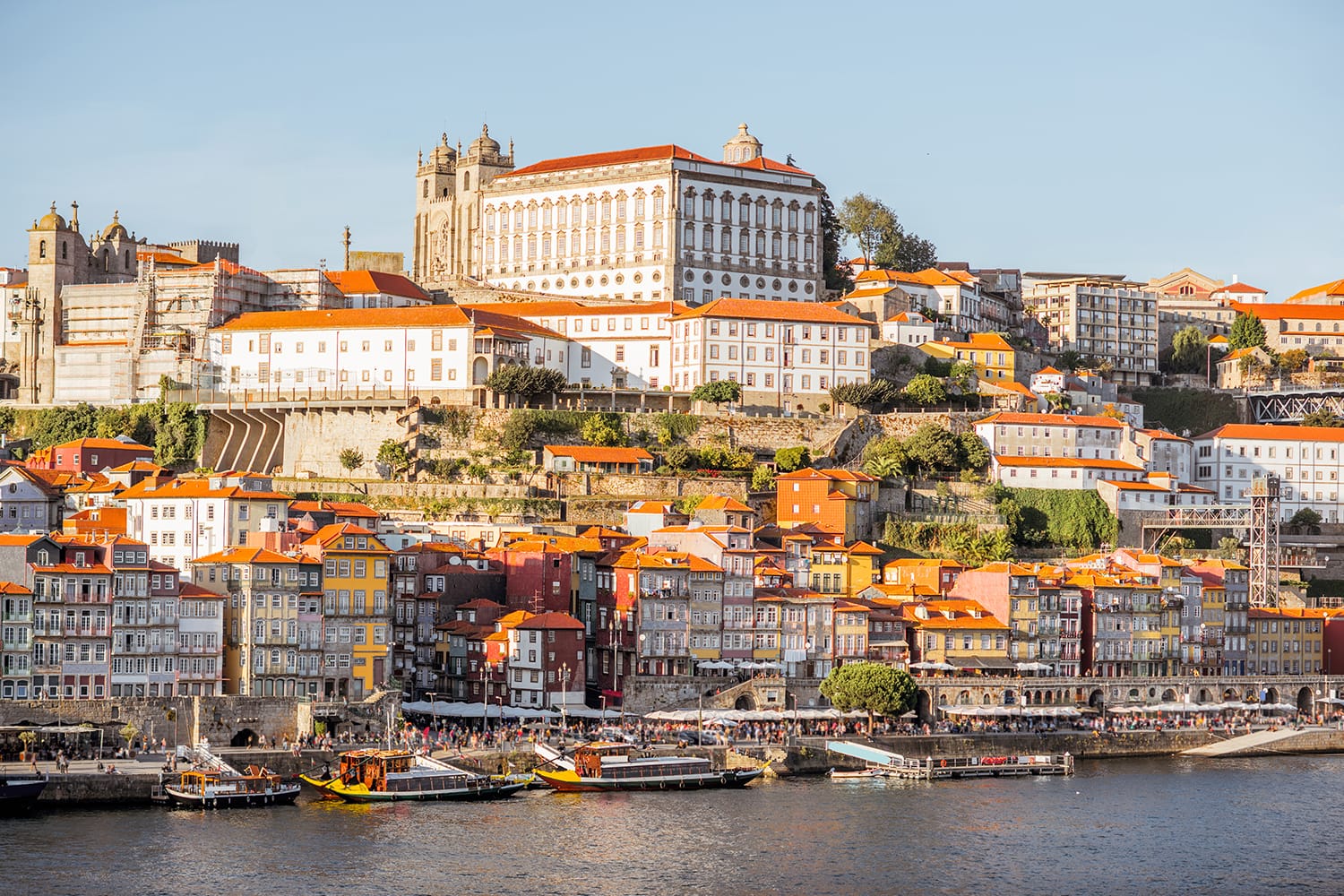
Port Wine Cellars
Of course, when you come to Porto, you have to try its famous port wine. Made from the grapes grown along the Douro Valley, it’s the city’s main claim to fame. In the European Union, only fortified wine from the Porto region can be sold as “port.”
You’ll find both large-scale wine producers and smaller operations in Vila Nova de Gaia. One of the most memorable is Ferreira Cellars, found inside an old convent, where you can tour the cellars and taste samples. Of course, you can also visit a few different cellars with a walking tour to decide for yourself which is the best of Porto.
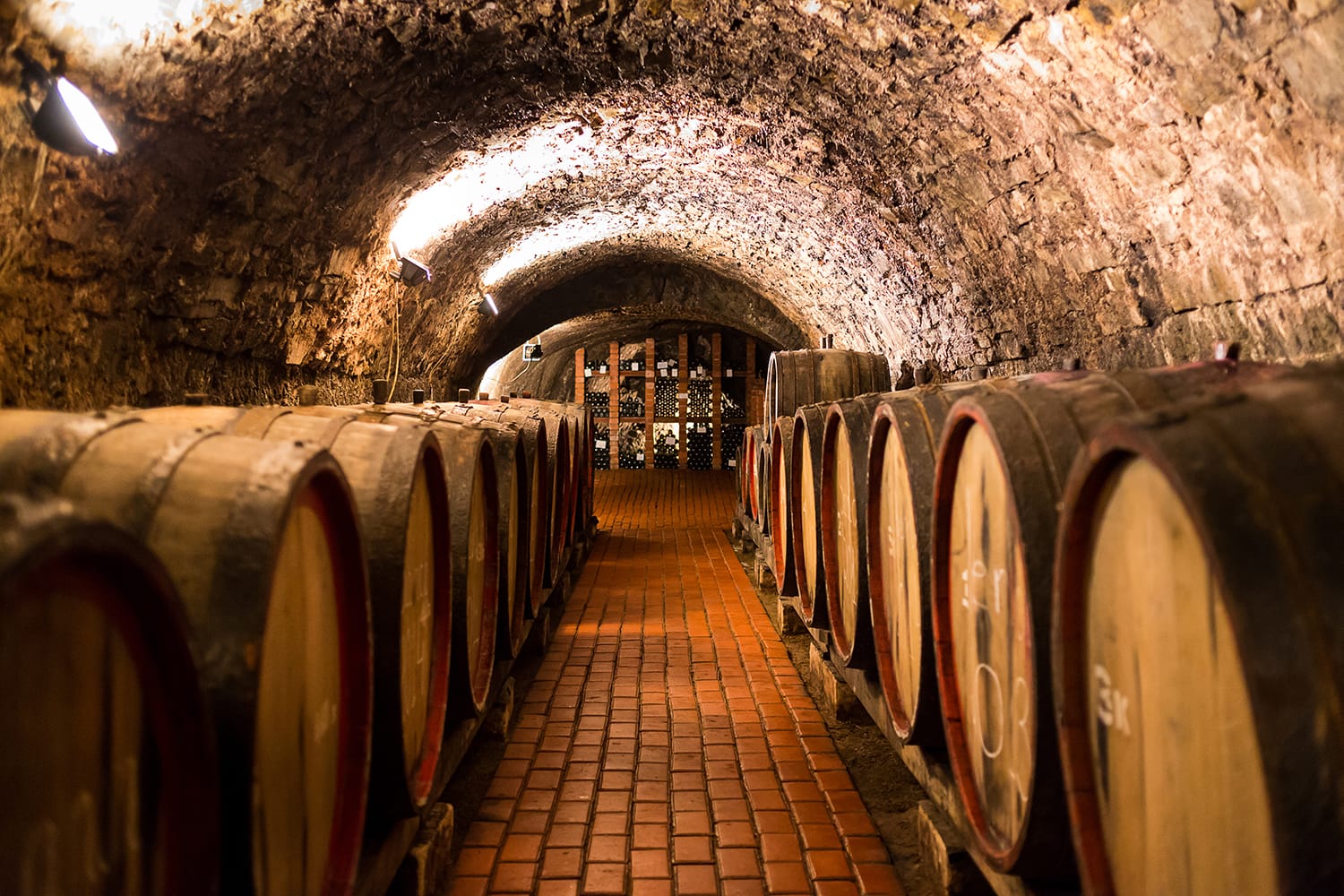
Monastery of Serra do Pilar
As sunset draws near, head back up to the area around the Luís I Bridge. Just above the bridge is the Mosteiro da Serra do Pilar, a former monastery and your last stop of the day.
While the monastery is nicely illuminated in the evening, the real reason to come up here is for the best sunset view in the city. You can see all of Porto from the terrace, including both banks, the river, and the bridge. What better way to end your time in Porto than by watching the sunset from up here and seeing the whole city at twilight?

Recommendation: If you have more than two days in Porto, we highly recommend you book a Douro Valley tour. You’ll spend a full day taking in the landscapes of the valley, tasting various wines and olive oils, enjoying a traditional Portuguese lunch in a vineyard, and riding along the Douro in a traditional rabelo boat.
Well, there you go – the ultimate Porto itinerary with everything you need to know to comfortably explore Porto in two days! If you’d like to extend your Portugal trip, take a look at our itinerary for three days in Lisbon.

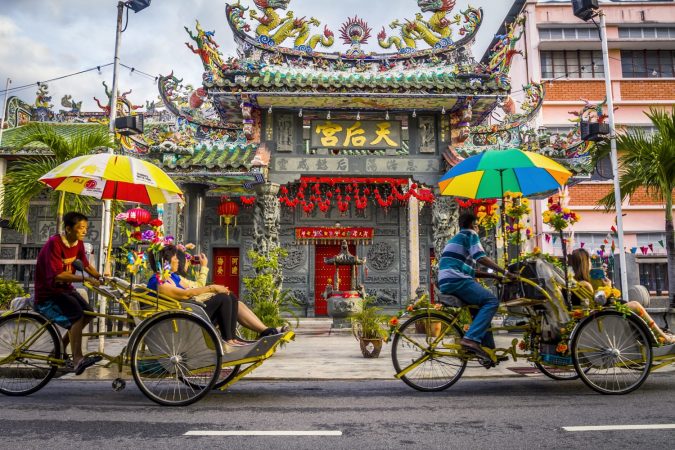
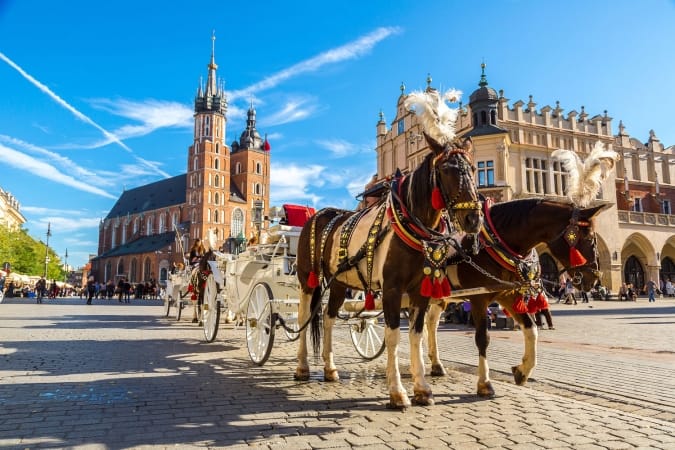
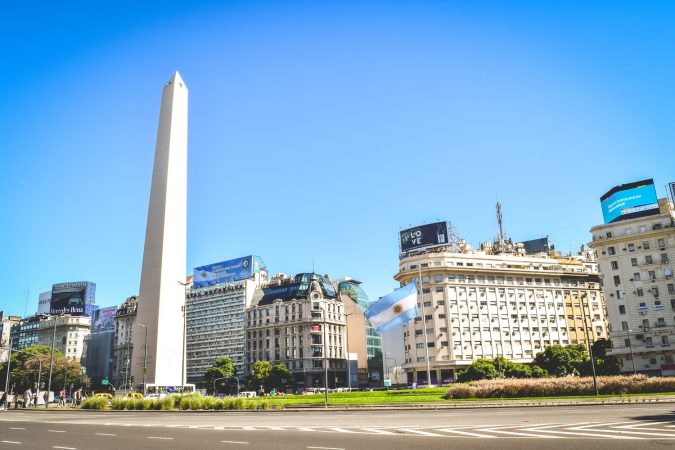



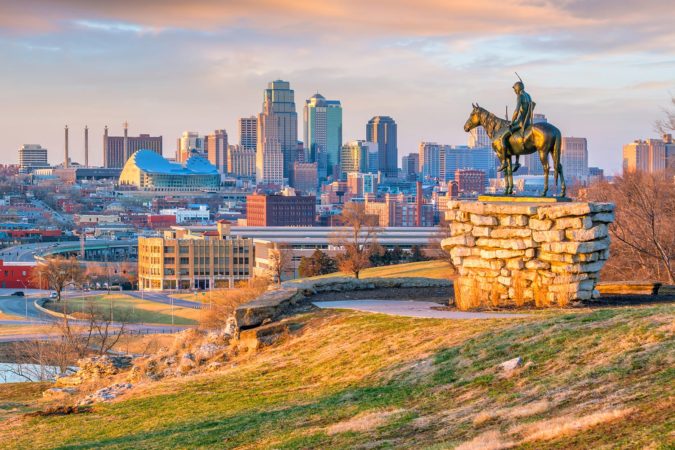
Comments